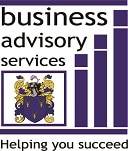More and more companies have been jumping on the trend of a customer-oriented business. Websites like Friendster, MySpace and YouTube are all testaments to the power and the allure of user-generated content.
In order to succeed in such a content-intensive enterprise, you’ll need to integrate content management software into your business’ operations. You probably know what this is; in fact, you’ve probably heard your fair share of sales pitches for them. Despite all the hype that these software vendors generate, many of the programs being offered do not work. This post will cover the necessary elements of any good content management program so you can determine whether your content management software is working and appropriate for your business.
Necessary Characteristics
Portability and Compatibility
Your CMS needs to make it easy for customers to both import and export content on and off your servers. Your CMS should be able to handle different kinds and formats of multimedia and not just text-based content. Also, make sure that your CMS is compatible with the systems that your customers are bound to use. There’s nothing that turns a customer off more than a system that’s frustrating to use.
Versioning
Any site that focuses on user-generated content will necessarily be very dynamic. Changes in terms of the site’s format and design will be frequent, and even more so in terms of the site content. Your CMS should be able to handle versioning at both the element and the page level so that maintenance or even rollbacks can be done with maximum efficiency and minimal loss of precious data and content.
Customisation
One mistake that many content-heavy companies make is thinking that there are only a few types of content management systems and content management software available. This is laughably untrue. In fact, there should be as many types of content management systems and software as there are companies. That’s because each company has its own needs and methods of handling content, and it’s the software that should conform to the company, not the other way around. Customisation is an important factor and feature if you want your software to be optimised for your business’ operations.
Good v Expensive
In a 2003 survey by the Information Architecture Institute, price was a very big factor that led companies to use mediocre or inappropriate content management software. Majority of the respondents said that commercial software was too expensive, which, the IAI said, hindered the effective and efficient use of content management software and systems. Fortunately, content management software has since matured.
Nowadays, it is a viable option for businesses, including your own, to get open source software and then just modify it to their needs. Open source software is free for public use and is very customisable. All you would need is a programmer who is well-versed in content management software languages like Java, PHP and MySQL in order to get a much cheaper content management application tailored to your needs. You’ll be saving on costs because you’ll be grouping together the role of designer, implementer and maintenance into the single salary of your IT staff.
In the same way that content-heavy businesses (like yours, presumably) tailor themselves to their customers’ needs, the content management software you use can and should be tailored to your needs as well.
